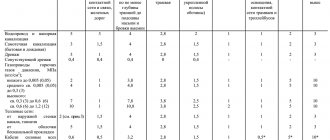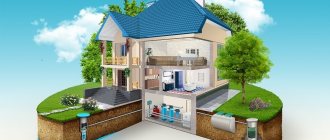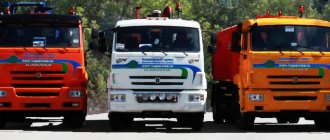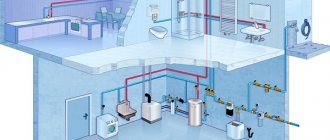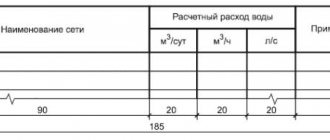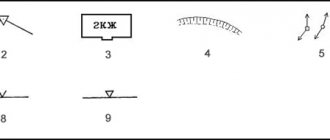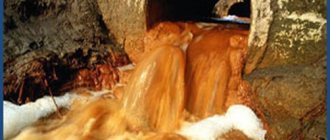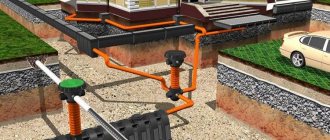Probably, many of you in your life have come across signs with the inscriptions of protected zones. But not everyone knows that there is such a thing as a sewerage protection zone.
It would seem that there is no need to protect the territory adjacent to the sewer networks. However, carrying out any actions in this area can lead to harmful consequences. We will tell you in our article what these consequences are and what measures exist to protect drainage networks.
General concepts
Sewer protection zones are areas that surround sewer network structures, bodies of water and airspace, where in order to provide protection to sewer systems, the use of certain actions or immovable objects is limited.
In such areas, it is necessary to refrain from such actions that contribute to harm to the structures of the sewer system:
- plant trees;
- obstruct passage to communication structures of the outlet network;
- produce a warehouse of materials;
- engage in construction, mining, blasting, piling work;
- carry out lifting work near buildings without the permission of the owner of the sewer network;
- carry out near networks located near water bodies, moving soil, dredging the bottom, immersing solids, pulling logs, chains, anchors of water vehicles.
The security zone + sewerage have their own boundary limits, which are set taking into account:
- location;
- appointments;
- diameter of buildings;
- gasket depth.
As a rule, boundaries are prescribed in a decree issued by the Minister of the Environment, but exact information can be obtained from local governments or water and sewerage organizations.
Consequences of not knowing the existence of protected areas
Ground collapse in a protected area
In our lives, we can often encounter damage to the external parts of the sewer system, which exceed the number of cases on communication lines, power supply or water supply.
This happens because construction and excavation workers carry out actions without knowing that there is a sewer protection zone in this area, and in the process cause damage to the drainage system.
What is the reason for this ignorance? Installation of warning signs about the presence of, for example, a pipeline or cable on the territory is the responsibility of the organizations that operate this facility.
Cases of installation of watermarks are prescribed in the Water Code, special signs - in other regulations and laws.
But the case of installing a sign that there is a sewer protection zone on the territory is not regulated by documents.
As a result, if communications are damaged, the operating organization bears responsibility if the sign is not installed, and if the sign is ignored, the work contractor bears responsibility. It is not legally established that owners of sewer networks must mark the territory of the security zone with signs.
Attention. However, in case of damage to sewer networks and buildings, the work contractor is subject to administrative liability by law (Administrative Code, Article 7.7).
This is what directly concerns damage to sewerage structures.
If the actions of the work manufacturer, in addition to damaging the system, led to a detrimental effect on the environment, then this is a different type of offense that bears a different type of liability.
Sewer protection
Restrictions also apply to the placement of sewerage systems
Sewerage is a source of increased pollution risk for water pipelines and water supplies. Therefore, not only buildings and roads must be placed at a certain distance from it. Sewage networks also cannot be located closer than certain distances to waterways.
Moreover, the numbers are impressive. Sewage in the water protection zone must be located at a distance of at least: 250 m from the river edge, 100 m from the lake shore, 50 m from underground water sources.
Quite stringent requirements are also imposed on the relative position of water supply and drainage pipelines. This is 10 m for a water supply system with a diameter of up to 1000 mm, 20 m for large diameters, and 50 m if the pipes run in wet soil, and the diameter does not matter.
Advice! It is better to install sewerage systems in sanitary protection zones of water supply facilities with a distance margin of 10% or more of the regulatory requirements. There are often cases when the measurement data, and even the punching holes of the developer and the water supply organization, differed. According to the water utility, the territory where the security zone is installed is being occupied by the sewerage system; according to the builders, it is not. As a rule, water managers have the final say.
Careful planning and accurate placement of the project on site should be given the utmost attention. After all, moving a completed sewer network will be very expensive in any case, and sometimes it is simply technically impossible.
Its operation cannot be carried out categorically, since even this fact itself, even in the absence of an accident, is already an offense, and if a water supply facility is polluted with sewage, we can even talk about criminal liability.
Warning
Advice. So, in order to avoid getting into a difficult situation that entails serious troubles, you should thoroughly study the area where you plan to carry out a certain type of work.
An analysis of the area for the presence of sewer mains and protected areas can be obtained from your local water and sewer company.
It is best to review a copy of the plan. Provided that a security zone is present on the territory, permission must be obtained to carry out work.
Precautionary measures
Typical sewer hatch
Considering the possible negative consequences, it is worth trying to prevent their occurrence. When planning to carry out excavation work, you should study the surrounding area .
The main sign of the presence of different types of sewer pipes is manhole covers with a characteristic large letter “K”. It can also be given away by coordinate plates or paint markings.
Identification of the sewer protection zone on the site plan
But even if they are not found, it is better to play it safe and contact your local water utility. There are diagrams of all sewer lines, which indicate whether or not a security zone of a sewer collector or other structure is located in a given area.
Moreover, in order to avoid subsequent inconsistencies, it is better to ask for a certified copy of the plan. If it turns out that the security zone is still present there, you can immediately apply for a permit to carry out work. Without such permission, work cannot be carried out near the sewerage system.
Regulatory requirements for the use of security zones
What actions can be carried out near sewer networks, and which are prohibited? Regulatory requirements on these issues are regulated by SNIP (40-03-99; 3.05.04-85; 2.05.06-85).
Attention. Sanitary norms and rules determine general requirements and standards. Region-specific values and rules are established by representatives of local governments.
Under normal environmental conditions, the security zone of the pressure sewer on the sides of the sewer is 5 m.
According to the resolutions of city water supply and sewerage organizations, a security zone is established in open areas and street passages:
- near networks not exceeding a diameter of 600 mm - 5 m from the outer walls of the pipeline or the extreme protruding point of the structure;
- near highways exceeding a diameter of 1000 mm - 10-25 m from structures or communication pipes, depending on the purpose of the network and the soil.
The following work is prohibited in the protected zone:
- engage in the construction of temporary or permanent structures;
- organize parking for vehicles;
- arrange landfills;
- plant shrubs and trees at a distance of less than three meters from the pipeline;
- raise or lower the existing ground level by cutting or filling;
- to construct temporary or permanent road surfaces from reinforced concrete slabs;
- use impact mechanisms close to the network sewerage structure (possibility of use - at a distance of 15 m);
- block free access to sewerage structures, wells, networks;
- lay the subway at a distance of less than 20 m from existing sewer collectors.
ZSO water supply networks
For structures, a water supply protection zone has been adopted, coinciding with the 1st zone; for water supply it is a sanitary protective strip (SPZ).
The boundary of the 1st belt of water intake facilities is assumed to be no less than:
- 30 m – from the walls of auxiliary and control tanks, filter devices and contacting clarifiers;
- 10 m – from water tower structures;
- 15 m – from a number of other utilities (storage facilities, settling tanks, water pumping stations, premises for reagent preparation and storage services);
- 10 m – for the objects listed above in agreement with the sanitary and epidemiological inspection.
SNP and SP regulate how many meters in each direction from the boundary sections of the water supply system there should be a PPP, the indicators are taken to be no less than:
- 10 m – in the absence of water in the soil, if the diameter of the water main does not exceed 1 m in the outer circumference;
- 20 m – if there is water in the soil and the outer diameter of the water supply line is above 1 m;
- 50 m – if there is a water protection zone in the ground and any diameter of the water pipe.
By agreement with the sanitary and epidemiological inspection center, it is permissible to reduce the width of the SWP when the water main passes through an area with dense buildings.
If there are warehouses storing chlorine reserves in the water intake area, the boundaries of the ZSO to residential and public buildings are established in accordance with safety regulations for facilities producing, storing, transporting and using chlorine.
Rice. 9 SPZ in accordance with SanPiN 2.2.1/2.1.1.1200-03
It may be interesting to read a separate article about what depth to bury a water pipe in a private house to avoid freezing in winter
Responsibilities of the work producer
Working sewer systems are the key to good life support for city citizens, therefore, when carrying out work in the protected zone, the organizer of this work is obliged to:
- adhere to strict adherence to rules and regulations;
- ensure through their actions the safety and integrity of sewerage structures in the work area;
- in case of detection of inconsistencies in kind with the analysis provided by the water supply and sewerage organizations, take precautionary measures and suspend the work until a further decision;
- remove snow, ice, and debris in a timely manner to ensure free access to sewerage facilities;
- When handing over the object, invite a representative of the body that issued the permit to the commission.
These measures apply to producers operating in open areas.
Size of the security zone
As we described above, according to SNIP, the security zone under normal conditions is equal to the 5-meter mark from the side walls of the sewer pipes.
This value is applicable for gravity and pressure drainage systems. In addition, the size of the protection zone is influenced by special environmental conditions.
These include:
- high seismic hazard of the site;
- low average annual temperature in a certain region;
- high humidity or weak soil.
Typically, local authorities apply in this case an increase of five meters.
The storm sewer security zone is established in a similar way. Please note: storm sewers are designed to receive conditionally clean industrial and atmospheric wastewater that does not require treatment before discharge.
If we judge the damage to the storm sewer, then it can be caused not only by incorrect use of the security zone, but also by technical violations in the installation of sewer pipes of this type.
Advice. So, when installing storm sewer systems, and indeed other types of sewer systems, it is necessary to comply with the existing requirements and technical conditions. As with any work, some deviations and defects are possible, but their size should not affect the performance of the sewer system.

